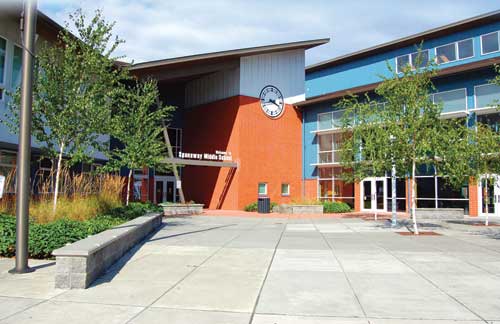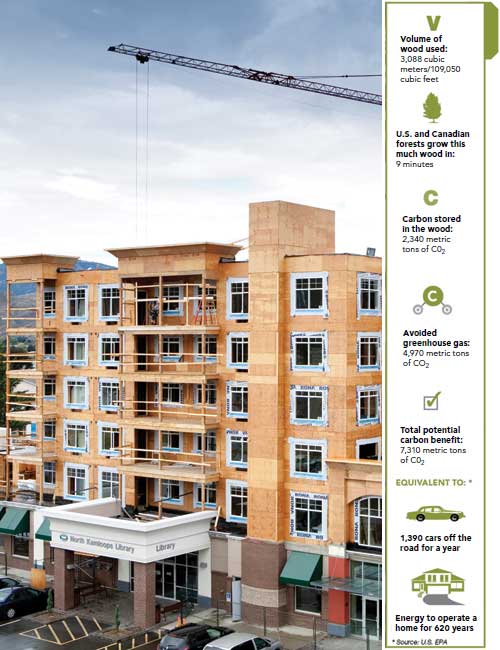Calculating Carbon Footprint
Adaptability and Service Life
The fact that wood buildings are easily adapted or dismantled and re-used adds to their environmental benefits. Although there are examples of wood-frame buildings that remain structurally sound after hundreds of years, North American buildings often have a service life of less than 50 years, regardless of material, because of changing needs or increasing land values.14 When one considers the embodied energy in these structures and the implications of material disposal, it is easy to understand why one of the tenets of sustainable design is that buildings should last 100 years or more. Partly this is a call for more durable materials, but another important factor in building sustainability is the use of building systems that can adapt to changing needs, either through renovation or deconstruction and re-use.
Toward Net Zero Energy
Wood has low thermal conductivity compared to steel and concrete. But since there are many factors that have a greater influence on a building's energy efficiency, the more relevant point for many designers is that wood building systems lend themselves to structures that are highly energy efficient (see sidebar: Saving Energy with Wood-frame Construction).
New wood building systems have also been developed that offer greater air tightness, less conductivity, and more thermal mass, including prefabricated systems that contribute to the low energy requirements of Passive House and net-zero designs. Passive House is an approach that uses the building's architecture to leverage natural energy sources, minimize energy consumption, and improve thermal comfort. Popular in Europe and gaining ground in North America, passive buildings rely heavily on high-performing building envelope assemblies and passive solar energy. Wood is an attractive material for passive design because of how it combines thermal mass with a number of performance merits, including water resistance, structural integrity, and finish quality. Although there are several types of net-zero-energy buildings, the term generally refers to residential or commercial buildings that are extremely energy efficient and produce the small amount of energy they do need via on-site renewable sources. Buildings may draw energy from the grid at night and return energy generated from renewable sources back to the grid during the day. The U.S. Department of Environment has a goal that all new commercial buildings be net zero energy by 2025.
| Saving Energy with Wood-frame Construction | ||
Between 2004 and 2011, the Bethel School District (BSD) reduced energy usage by more than 7.6 million kilowatts and saved $4.3 million in utility costs—equivalent to the cost of electricity for 15 of the District’s elementary schools for one year. BSD reports an 81 percent ENERGY STAR rating overall, and several of their 17 elementary and six junior high schools have a rating of between 95 and 98 percent. While size, configuration and age of the 23 facilities varies, one thing is constant: each is wood-frame. According to the BSD Director of Construction and Planning, Jim Hansen, wood framing allows them to over-insulate with inexpensive batt insulation, increasing energy efficiency. Wood framing also offers a number of thermal benefits. “Steel and concrete need separation between the structure and exterior envelope,” said architect Wayne Lerch. “This separation is not required with wood because of its inherent thermal properties.” In the past, the building code did not distinguish between wood and metal or concrete when it came to exterior walls and thermal breaks. However, the 2009 Washington State Energy Code requires a thermal break between exterior and interior walls for metal and concrete, which means thicker walls and added cost. Wood doesn’t have this requirement, so the exterior skin can be directly attached to the wood stud. |
Project: Library Square Library Square is a six-story mixed-use development that includes five stories of wood-frame housing over a 20,500-square-foot library and 15,000 square feet of retail space. |











